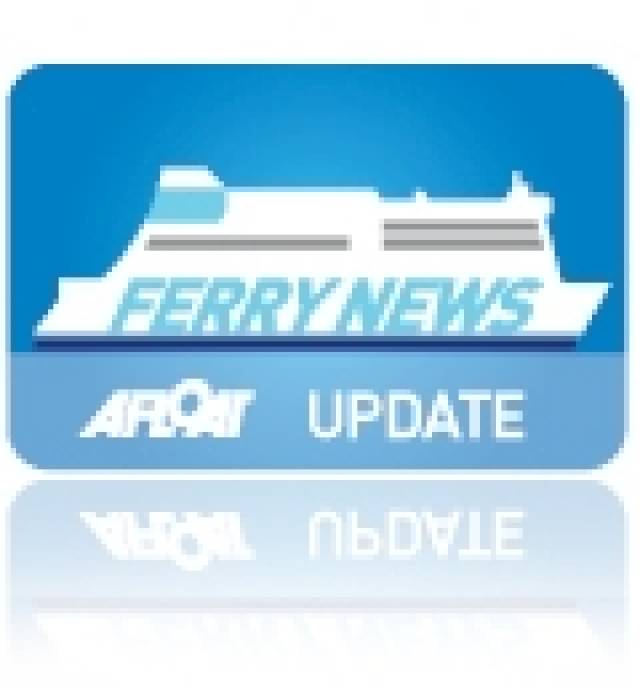#FrenchRoutes – This weekend's Dublin-Cherbourg round-trip sailings have been cancelled by Irish Ferries, it is not known as to why, though the route is scheduled to resume service next Saturday, writes Jehan Ashmore.
Now in its second year, the Ireland-France service is otherwise operated by the chartered ro-pax Epsilon which is currently in Dublin Port. The 500 passenger and crew capacity ferry normally departs for France on Saturday afternoon's and returns to Ireland on Monday morning's.
The ferry is berthed close to the East-Link Bridge having arrived last Monday after making a repositioning passage in ballast from Rosslare (see related report).
A fleetmate, Isle of Inishmore which has been on the Dublin route since December to boost capacity over the festive season, recently returned fresh from annual overhaul to cover in for Epsilon.
Epsilon as well as the French route sails on the Dublin-Holyhead route, Tuesday's to Saturday's. It is understood the ro-pax is to resume service on the Welsh route but not until next Thursday's 01.55 sailing departing Dublin Port.
Following the overhaul of Isle of Inishmore at a dry-dock in Birkenhead, this yearly procedure would of normally led to her immediate return to routine sailings on the Rosslare-Pembroke route.
Isle of Inishmore's extended run on Dublin-Holyhead in lieu of Epsilon, saw the Rosslare ferry remain running alongside the central corridor route regulars Ulysses and Jonathan Swift. Both cruiseferry and fast-ferry had also undergone recent overhauls at the same Merseyside dry-dock facility, Cammell Laird.
This morning Isle of Inishmore took her final inward bound sailing to Dublin before she finally departed the port this afternoon for Rosslare. As she departed Dublin Bay she did not take the shorter coastal shipping lane to Rosslare, but instead rounded the South Burford buoy to head further offshore of the Kish Bank Lighthouse.
Isle of Inishmore took a more leisurely five hour passage to reach Rosslare having gone as far into the Irish Sea via the the East Kish, East Codling and Codling bank bouys. From that last bouy she set a south-westerly course heading for the Wexford port.
This evening's call was brief as she then departed again to allow for Oscar Wilde following a late arriving from Pembroke Dock. As a result the Isle of Inishmore's return to her usual route was delayed as she is to depart at a later than scheduled departure of 22.00 tonight.
The 'Oscar' has been on the Rosslare –Pembroke since the Inishmore's transfer to the Dublin route almost two months ago.
Tonight Oscar Wilde departed Rosslare to undergo her turn of annual overhaul at A&P Falmouth.
Following dry-docking the cruiseferry is to resume seasonal sailings, firstly on the Rosslare-Cherbourg route beginning on 25 February. The Oscar's sailing roster will become busier as the high-season service to Roscoff starts in May.
































































